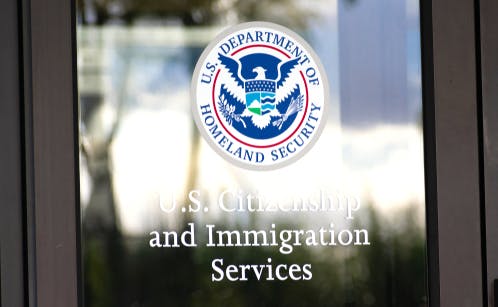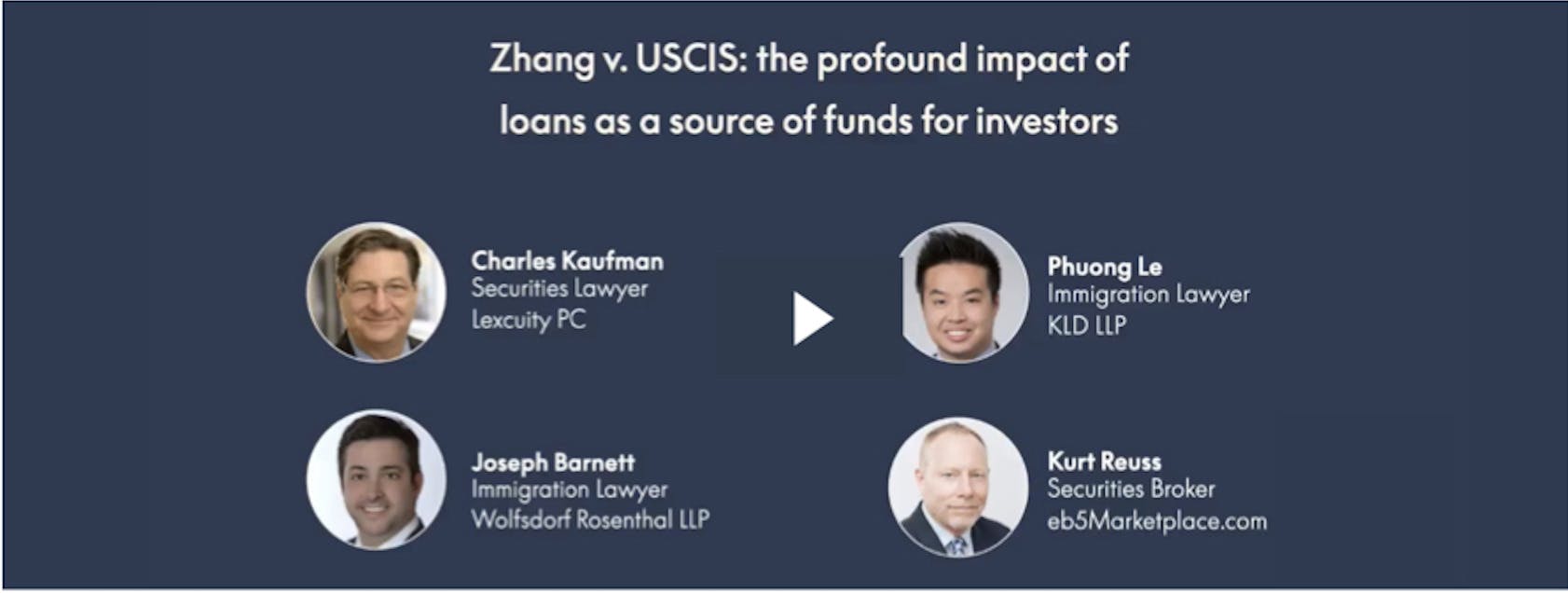An EB-5 investor must demonstrate the lawful source and path of investment funds, and USCIS is particularly stringent with this requirement. With the recent Zhang decision, new pathways for investment funds have opened up, and more prospective EB-5 investors are looking into the use of unsecured loans to augment and meet the minimum EB-5 investment requirement.
Background: USCIS changing the rules of loans as a source of funds
This case involves a policy change that USCIS announced and instituted in 2015 that reinterpreted the terms “capital” and “indebtedness” in the EB-5 regulations.
Two plaintiffs each borrowed $500,000 in cash from businesses they owned and controlled, and in 2013 they invested the proceeds from those loans into a new commercial enterprise (EB-5 fund).
However, in 2015, during an EB-5 stakeholder meeting, USCIS changed the rules of the game by saying that the cash proceeds from a loan, that a petitioner obtained from a third party, is not really cash — it’s indebtedness. And because it’s indebtedness, the petitioner needs to demonstrate that they own assets or collateral used to secure the loan.
And this language sent ripples through the industry as USCIS “cherry-picked” and misinterpreted language from the Soffici, Izummi, and other late-1990 precedent cases. Later in 2015, USCIS began denying I-526 petitions that had unsecured loans as a source of funds. So, the petitioners filed a lawsuit.
Two court decisions of ‘Zhang v USCIS’
Plaintiffs went on to win their case in district court in November 2018. USCIS then appealed to the US court of appeals for the District of Columbia in 2019; but the plaintiffs won again in October 2020 when the Circuit Court confirmed that unsecured loans could indeed be a legitimate source of funds for EB-5.
The court essentially looked to the standard definitions of cash and indebtedness to distinguish between the two, and ruled that USCIS’ interpretation violated the plain meaning of the EB-5 regulations. The court stated that as long as funds are obtained through a loan, that money is cash, and it does not need to be secured by an asset that the investor owns. The appeals court rejected USCIS policy considerations, saying that even if you have policy concerns about the use of unsecured loans, this is what the regulation says. The court wrote:
“Cash is fungible and it passes from buyer to seller, without imposing on the seller any of the buyer’s obligations to his own creditors. The buyer’s source of cash, whether paycheck, gift or loan makes no legal or practical differences.”
And concluded:
“Text, structure, and regulatory context show that the term ‘cash,’ as used in 8 C.F.R. § 204.6(e), unambiguously includes the proceeds of third-party loans. Because USCIS’s contrary construction is impermissible, we affirm the district court’s decision to set aside the denial of the plaintiffs’ petitions.”
Thus, at every stage, the federal court system agreed with plaintiffs and disagreed with USCIS’s position. Loan proceeds count as cash, thus qualifying as capital within the EB-5 regulations. USCIS has not appealed this decision to the Supreme Court. USCIS recently approved plaintiff Zhang’s Form I-526. As of now, it appears to be the law of the land. Of Note: Ira Kurzban and John Pratt litigated on behalf of the plaintiffs and we as an industry thank them for their efforts.
Investor impact: a ’huge victory’
Zhang could end up being a huge victory for immigrant investors and the EB-5 industry. Now we get to see how the decision impacts USCIS adjudication and its review of the unsecured loan documents submitted in support of the EB-5 investor’s source of funds.
Even if USCIS accepts an unsecured loan as a source of funds, they will still verify the genuineness of the loan, where the loaned funds came from, and potentially how the lender earned those funds. A key to investor success is your presentation to USCIS. It may be advisable to obtain expert opinions from local attorneys or banking/financial experts to confirm that the investment capital was lawfully obtained and invested in a new commercial enterprise.
It is also important to note that an investor considering an unsecured loan should stay away from a loan offered by the new commercial enterprise, as this could be seen as indebtedness rather than cash.
Interested in an EB-5 investment loan? eb5Marketplace can help. Schedule a call now.
USCIS has yet to change the Policy Manual
Following the decision of the appeals court, USCIS has yet to change its online Policy Manual in the subsection regarding the use of loan proceeds. The Policy Manual still says that loans must be a secured by assets that the immigrant investor owns, which is inconsistent with what the Zhang decision of the circuit court. So, there’s a disconnect between what the regulations and the federal court say, and what USCIS is seemingly requiring of their adjudicators in their Policy Manual. With that said, USCIS has indicated that they will be reconsidering petitions that were denied solely on this basis.
April 2021: USCIS approves Zhang I-526 petition
On April 14, 2021, USCIS approved the Zhang I-526 petition — with an unsecured loan as a source of funds. From my perspective as an immigration lawyer, this is a landmark decision that suggests that the Immigration Agency will not be appealing the circuit court decision to the U.S. Supreme Court.
How can we expect USCIS to react going forward?
There may be some growing pains, but in the end I believe — and so do federal courts — the plain language of the regulations define the requirements. Until they change the law or modify the regulations, the law is what the court says it is.
And the USCIS approval of Mr. Zhang’s I-526 petition gives further credence to the notion that EB-5 investors will once again be able to use unsecured loans as source of funds.
So as an immigration attorney I feel more confident in going down this path than I did a year ago, before the circuit court ruling. A district court decision doesn’t necessary bind USCIS in further adjudications. But a circuit court decision should be binding and followed any USCIS.
While the law is now clear, only time will tell if USCIS will accept the court’s clear decision, or whether USCIS will continue to issue RFE, NOIDs and denials on this basis. With adjudications times taking over two years, many investors will not know until the IPO actually adjudicates their case.








